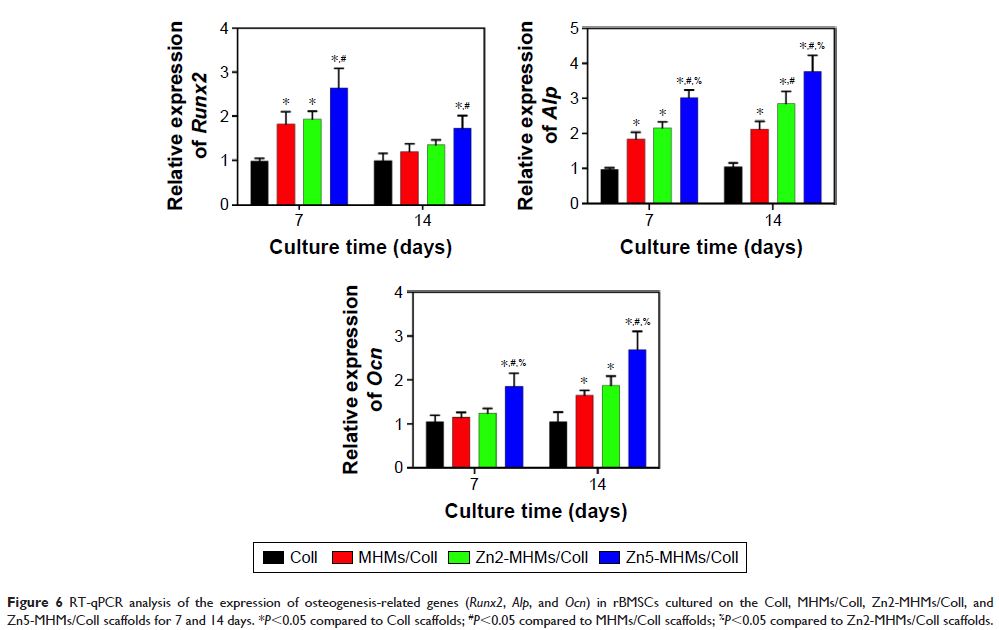100205
论文已发表
注册即可获取德孚的最新动态
IF 收录期刊
- 3.3 Breast Cancer (Dove Med Press)
- 3.4 Clin Epidemiol
- 2.5 Cancer Manag Res
- 2.9 Infect Drug Resist
- 3.5 Clin Interv Aging
- 4.7 Drug Des Dev Ther
- 2.7 Int J Chronic Obstr
- 6.6 Int J Nanomed
- 2.5 Int J Women's Health
- 2.5 Neuropsych Dis Treat
- 2.7 OncoTargets Ther
- 2.0 Patient Prefer Adher
- 2.3 Ther Clin Risk Manag
- 2.5 J Pain Res
- 2.8 Diabet Metab Synd Ob
- 2.8 Psychol Res Behav Ma
- 3.0 Nat Sci Sleep
- 1.8 Pharmgenomics Pers Med
- 2.7 Risk Manag Healthc Policy
- 4.2 J Inflamm Res
- 2.1 Int J Gen Med
- 4.2 J Hepatocell Carcinoma
- 3.7 J Asthma Allergy
- 1.9 Clin Cosmet Investig Dermatol
- 2.7 J Multidiscip Healthc

已发表论文
对锌掺杂的介孔羟基磷灰石纳米球的评估,以用于优化骨增生的新型仿生支架的构建
Authors Yu W, Sun T, Qi C, Ding Z, Zhao H, Zhao S, Shi Z, Zhu YJ, Chen D, He Y
Received 3 November 2016
Accepted for publication 11 February 2017
Published 24 March 2017 Volume 2017:12 Pages 2293—2306
DOI https://doi.org/10.2147/IJN.S126505
Checked for plagiarism Yes
Review by Single-blind
Peer reviewers approved by Dr Lakshmi Kiran Chelluri
Peer reviewer comments 3
Editor who approved publication: Dr Linlin Sun
Abstract: Biomaterials with
high osteogenic activity are desirable for sufficient healing of bone defects
resulting from trauma, tumor, infection, and congenital abnormalities.
Synthetic materials mimicking the structure and composition of human trabecular
bone are of considerable potential in bone augmentation. In the present study,
a zinc (Zn)-doped mesoporous hydroxyapatite microspheres (Zn-MHMs)/collagen
scaffold (Zn-MHMs/Coll) was developed through a lyophilization fabrication
process and designed to mimic the trabecular bone. The Zn-MHMs were synthesized
through a microwave-hydrothermal method by using creatine phosphate as an
organic phosphorus source. Zn-MHMs that consist of hydroxyapatite nanosheets
showed relatively uniform spherical morphology, mesoporous hollow structure,
high specific surface area, and homogeneous Zn distribution. They were
additionally investigated as a drug nanocarrier, which was efficient in drug
delivery and presented a pH-responsive drug release behavior. Furthermore, they
were incorporated into the collagen matrix to construct a biomimetic scaffold
optimized for bone tissue regeneration. The Zn-MHMs/Coll scaffolds showed an
interconnected pore structure in the range of 100–300 µm and a sustained
release of Zn ions. More importantly, the Zn-MHMs/Coll scaffolds could enhance
the osteogenic differentiation of rat bone marrow-derived mesenchymal stem
cells. Finally, the bone defect repair results of critical-sized femoral
condyle defect rat model demonstrated that the Zn-MHMs/Coll scaffolds could enhance
bone regeneration compared with the Coll or MHMs/Coll scaffolds. The results
suggest that the biomimetic Zn-MHMs/Coll scaffolds may be of enormous potential
in bone repair and regeneration.
Keywords: drug delivery, mesoporous hydroxyapatite microspheres, zinc, biomimicry, scaffold, bone regeneration
Keywords: drug delivery, mesoporous hydroxyapatite microspheres, zinc, biomimicry, scaffold, bone regeneration
